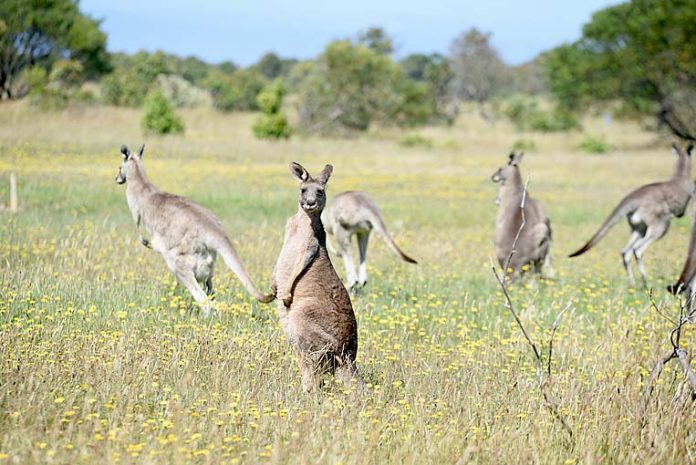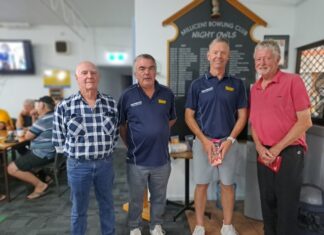
MOUNT Gambier could become home to kangaroo meat processing if the State Government lifts a long standing commercial harvesting ban in the region.
The government is considering a raft of new population control measures across the state, which could include more kangaroo species being included in the commercial harvest.
The move comes as the South East records dozens of kangaroo related car accidents each year and anecdotal reports of soaring population numbers.
Some farmers are also battling to save their pastures with reports of hundreds of kangaroos converging on single paddocks at night.
Grant District Council has been at the forefront of a push to have the region’s eastern grey kangaroo – which is deemed a protected species – included in the harvesting zone.
Anecdotal evidence suggests up to 40pc of vehicle collisions in the district were contributed to the native animal.
Mount Gambier commercial harvest proponent Glenn Fry – who has been exploring commercial kangaroo processing – said numbers had been “exploding” across the region and a sustainable harvest must be considered.
While farmers could gain a permit to shoot kangaroos, he said these carcasses were being “left to rot on the ground”.
He said Victoria was home to a viable kangaroo meat industry, but the South East of South Australia had been shut out of this opportunity.
“There are more and more kangaroos out there, they are breeding up in the radiata pine and bluegum plantations,” Mr Fry said.
“I could not put a number on amount of kangaroos out there. If you go out at daytime you might see 10 in a paddock, but at night there are hundreds.
“Some of these bucks are six or seven foot tall.”
Not only were large mobs of kangaroos decimating paddocks, he said they were also a hazard on the road network.
“We do not want to wipe them out, it is not about that. It is about a sustainable harvest,” Mr Fry said.
He said any sustainable harvest would have controls such as numbers and size limits.
Grant District Deputy Mayor Gill Clayfield said there appeared to be an “over-abundance” of kangaroos in the region.
The Port MacDonnell residents said kangaroo numbers were particularly high around the coastal township.
“I know the Port MacDonnell Golf Club has a lot of trouble with kangaroos,” the elected member said.
The golf course has been invaded at times by more than 250 kangaroos, which leave a trail of destruction.
She also revealed she regularly witnessed a large mob of kangaroos – up to 40 – in paddock on a farming property near the town.
“I do not have a problem with commercial harvesting, but I personally would not eat kangaroo,” the elected member said.
“There has certainly been discussion about the large number of kangaroos within council. We have also tried to get source statistics about the number of kangaroo-related accidents in the district.”
Explaining her stance may not be popular with some people, she said an over-abundance of kangaroos was putting people lives in danger on the roads and was destroying farming land.
Primary Industries Minister Tim Whetstone said high kangaroo numbers were putting severe pressure on farmers and the environment.
“The proposed changes will support primary producers, local government and the commercial kangaroo industry better manage over-abundant kangaroos and provide further opportunities to use kangaroos for meat or skin production,” Mr Whetstone said.
Department for Environment and Water chief executive officer John Schutz said the current kangaroo management plan was adopted in 2018, but high kangaroo numbers have prompted a review in order to better protect the environment, support kangaroo welfare and the agricultural and commercial harvest industries.
“We are suggesting the commercial harvest zone be expanded from South Australia’s pastoral area to also cover Yorke Peninsula, Adelaide Hills, Fleurieu Peninsula, Kangaroo Island and the South East,” Mr Schutz said.
“We are also proposing to include more kangaroo species in the commercial harvest. We are looking at species which are not threatened and have increased in abundance and distribution during the past decade.
Surveys will be conducted to determine population estimates for each species in each harvest sub-region so that quotas can be set before kangaroos are harvested.
This will ensure that populations are managed sustainably.
“By better managing kangaroo over-abundance across the state we will see improved outcomes for the environment as well as supporting kangaroo welfare.”





